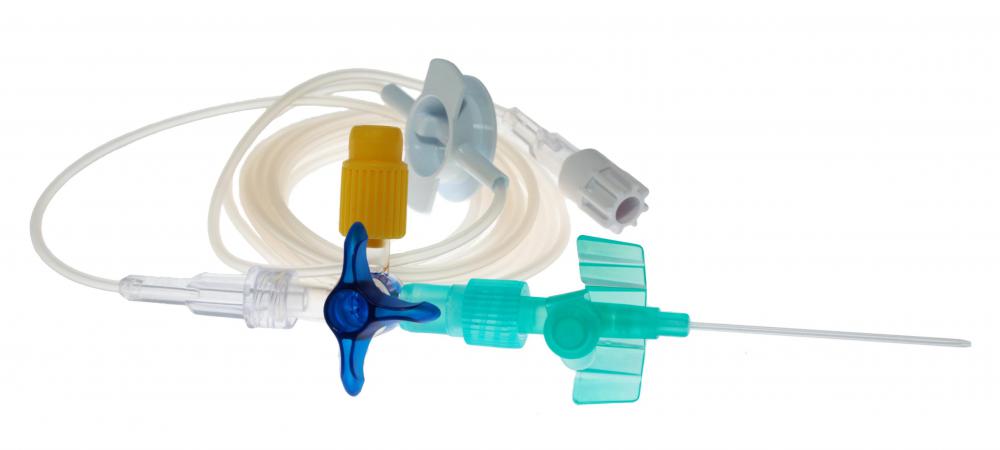At WiseGEEK, we're committed to delivering accurate, trustworthy information. Our expert-authored content is rigorously fact-checked and sourced from credible authorities. Discover how we uphold the highest standards in providing you with reliable knowledge.
What Is a Venous Cannula?
A venous cannula is a small thin catheter tubing inserted into a vein to administer fluids and medications through an intravenous (IV) line. The venous cannula may also be used to collect blood for laboratory testing. Placement of the cannula may be painful; an injection of an anesthetic or the application of an anesthetic cream may help to relieve the discomfort of the insertion procedure. Bruising or bleeding from the insertion site are frequent side effects of using a venous cannula, as well as infections, air embolisms, and phlebitis.
Safety precautions are necessary while a venous cannula is located inside the vein. Cannula tubing should be replaced after no longer than four days, and the frequency of the replacement schedule may be altered based on the liquid substance being transfused into the patient. Solutions containing fat molecules usually require the removal and replacement of the cannula no more than 24 hours after the lipid fluid is used.

Prior to inserting the venous cannula, several steps must be followed to ensure the continuing health of the patient. The skin at the insertion site must be cleaned with an antiseptic or antibacterial solution, such as isopropyl alcohol or povidone-iodine. A tourniquet may be used to increase the visibility of the vein being used for the venous cannula; this reduces the likelihood of repeated needle sticks to insert the cannula properly. If a patient has vasoconstriction, or narrowed veins, warm cloths may be applied over the proposed cannulation site to widen the diameter of the vein, reducing the probability of multiple cannulation attempts.

A venous cannula is inserted through a hollow needle. Once the correct placement of the needle is confirmed, the needle is removed from the body and the cannula remains inside the vein. The cannula tubing is usually looped and securely taped to the skin with medical grade adhesive tape.
Complications that may arise from venous cannulation are varied. A thrombus, or blockage from a blood clot, may obstruct the hollow area inside the cannula. If the lumen, or opening, of the venous cannula is blocked, it can be flushed with a saline solution or replaced with a new cannula to prevent any adverse effects from the thrombus.

Another complication that occurs rarely after cannulation is the formation of an air embolism. If left untreated, the air bubble could enter into the heart and block the flow of blood. It is possible that bacteria may enter the body through the cannula and cause a serious infection; regular maintenance of the venous catheter may help to reduce the infection risk. Additionally, the vein may become irritated and inflamed after the cannula is inserted, causing a condition called phlebitis.
AS FEATURED ON:
AS FEATURED ON:















Discuss this Article
Post your comments